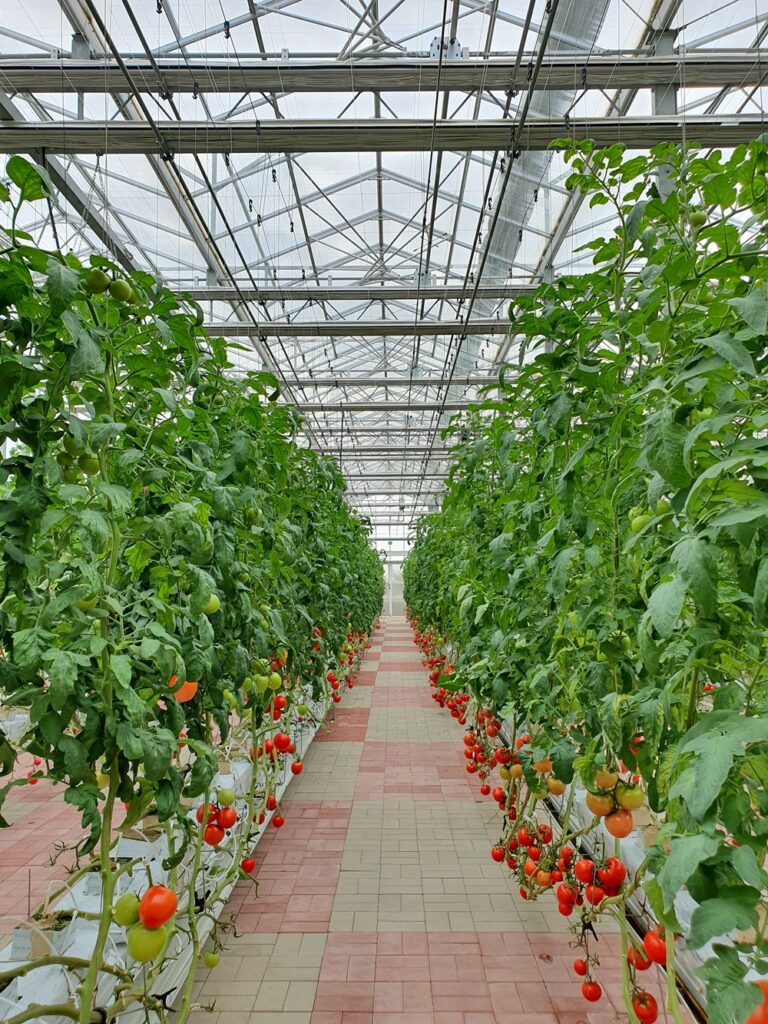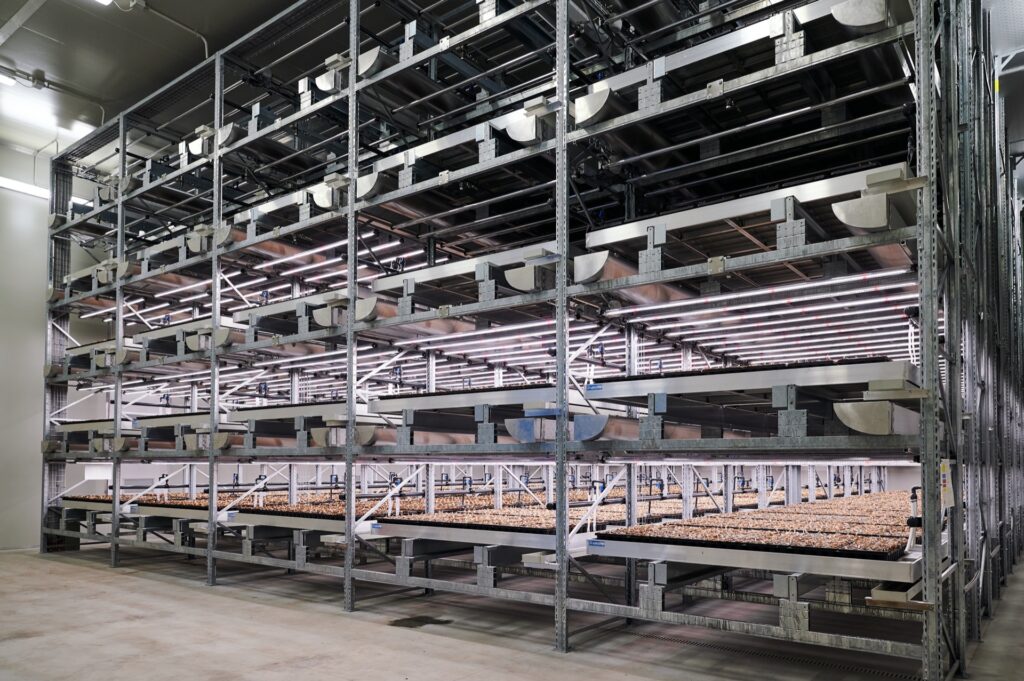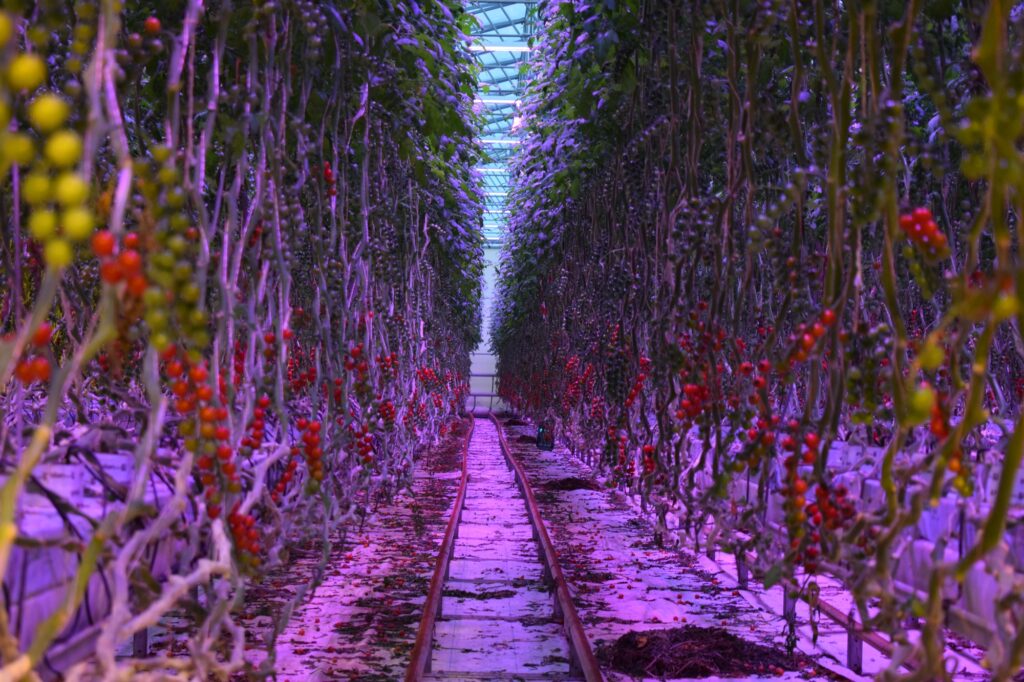In the first part in a series of five articles that are going to look into how modern LED lighting can be used to grow food, Alex Martin and Alessandro Oliveri from Dextra and Igrox Srl looks at some of the fundamentals.
The question of how LED grow lighting helps horticultural, and potentially other crops, to grow is being asked more and more. However, as with all new technology this can raise more questions than it answers. An example of this is the type of grow lights required for different plant types and environments. Most seem to assume that all LED horticultural lighting is the same but that is very far from the truth.
In recent years, advancements in lighting technology have revolutionised the way we can grow plants in artificial environments. Light-emitting diodes (LEDs) have become a popular choice for horticultural applications due to their energy efficiency, longevity, and the ability to tailor their light spectrum to meet the specific needs of plants. To elaborate on this, we will explore the main differences between the LED lighting spectrum for greenhouse and for vertical farming applications. In doing this, hopefully we will highlight the unique considerations for each setting.

Greenhouse Lighting:
Greenhouses are structures designed to harness natural sunlight while providing a controlled environment for plant growth. When supplementing natural light with artificial sources, the LED lighting light spectrum must complement the sunlight to optimise photosynthesis and plant development. Greenhouses receive varying sunlight throughout the day and seasons. LED lighting in greenhouses aims to supplement the natural light, filling in gaps and extending photoperiods when necessary.
The LED light spectrum for greenhouses often mimic the sunlight spectrum, providing a balance of red light, that has a wavelength of 600-700 nm(manometers)and blue 400-500 nm – both of these ranges are crucial for photosynthesis.
Plants have specific light requirements during different growth phases. For example, blue light is essential for vegetative growth, while red light promotes flowering and fruiting.

Vertical Farming Lighting:
Vertical farming involves cultivating plants in stacked layers or vertically inclined surfaces, often in indoor environments. Unlike greenhouses, vertical farms are not reliant on natural sunlight, allowing for precise control over the lighting environment.
In vertical farming, LED lighting is the primary source of illumination. The light spectrum can be precisely tailored to meet the specific needs of crops without considering the natural sunlight spectrum.
Red and blue light spectrum are still crucial, but vertical farms can leverage a more targeted approach, emphasising light wavelengths that directly contribute to photosynthesis and plant growth efficiency.
Vertical farms are designed to maximize space efficiency. LED lighting can be strategically positioned to ensure uniform coverage throughout the vertical growing space.
Furthermore spectral optimisation in vertical farming aims to minimise wasted energy and enhance the overall yield per sqm.
In addition to that different crops have varying light requirements. LED lighting in vertical farms can also allow for multiple tailored spectrums based on the specific needs of the cultivated plants, ensuring optimal growth conditions for diverse crops within the same facility.
In conclusion, the main difference in LED lighting light spectrum for greenhouse and vertical farming applications is the degree of control over the light conditions. Greenhouses seek to complement natural sunlight. On the other hand, vertical farms exploit the freedom to customise the light spectrum , optimising efficiency and space utilisation. As technology continues to advance, the integration of LED lighting in both settings is set to play a pivotal role in meeting the increasing demand for sustainable and efficient agriculture.
The Basics – The Electromagnetic Spectrum

When we discuss light in everyday terms, we typically refer to visible light – the portion of the electromagnetic spectrum (EM spectrum) that our eyes can naturally perceive. But isible light constitutes only a small segment of the entire EM spectrum, as illustrated in the picture, and when growing food using LEDs we talk about a wider range of light.
Wavelength, a term frequently used in this context, describes the oscillation of a passing photon through an electric field as it traverses space. The EM spectrum encompasses all possible energy levels that photons may possess, with higher energy corresponding to shorter wavelengths.
Visible light wavelengths span from around 380 nanometers to 760 nanometers. However, both the sun and artificial electric lamps can emit waves shorter and longer than those within the visible light range.
Our sun produces a full spectrum of light however, we can only see some of that light with our eyes. There are animal species that can see parts of the light spectrum that we cannot. Equally not see some of the colours of the spectrum that we can. The same is true for plants, some plant species thrive on a different light colour spectrum than other plants do.
Just beyond the realm of visible light lies the ultraviolet (UV) portion of the spectrum. Named for being “beyond” the colour violet in the visible spectrum, UV light, a component of sunlight, is responsible for causing sunburn and encompasses a broad range of wavelengths.
Descending below the threshold of visible light brings us to infrared (IR) radiation, often referred to as heat radiation. This electromagnetic radiation, emitted by all objects, correlates with temperature—the warmer an object, the higher it registers on the IR scale. In instances where objects become sufficiently hot, they transition to incandescence, emitting EM radiation in the visible spectrum, a principle observed in incandescent lamps.
Further down the scale, we encounter microwaves, utilised for heating food, and radio waves, employed in long-distance communication. The EM spectrum thus unveils the expansive range of energy levels and wavelengths beyond what is perceptible to the human eye.


